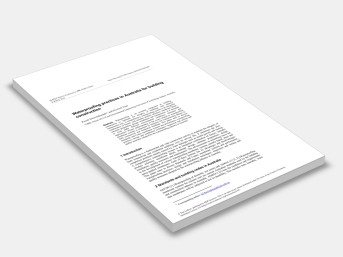Waterproofing practices in Australia for building construction
Waterproofing is an essential component in building construction to maintain the integrity of buildings with reduced maintenance cost. A comprehensive waterproofing system is an integrated combination of factors, and includes product selection, membrane detail, substrate preparation, design, installation and maintenance. It is designed to work under different environmental conditions, substrates and applications. Proper understanding of the issues related to waterproofing membrane systems is important to minimise the waterproofing failures in both commercial and residential buildings. This paper aims to discuss Standards and Codes; membrane systems and performance, waterproofing practices, design and installation techniques, inspection and testing and quality assurance adopted by the waterproofing industry in Australia.
Contents:
1: Introduction
2: Standards and building codes in Australia
3: Classifications of membrane systems
3.1: Liquid membranes
3.2: Sheet membranes
3.3: Spray-on membranes
4: Types of waterproofing membrane
4.1: Positive and negative side membranes
4.2: Sub-grade and above-grade waterproofing
4.3: Exposed and non-exposed system
5: Extent of waterproofing
5.1: Internal works
5.2: External works
6: Waterproof defects and risk minimization strategies
7: Design techniques
8: Concrete surface preparations
9: Testing and quality assurance
9.1: Testing
9.2: Quality assurance
10: Conclusions
